Subtotal: 10,89 $
Car Tips
74 Tips to Prolong Your Car’s Lifespan through Maintenance
Master the Break-In Period for Your Dream Car
So, you’ve finally got your hands on your dream car! Now, it’s time to ensure that it remains in pristine condition for as long as possible. Here are some essential tips to keep in mind as you drive away from the dealership:
- During the break-in period, which typically lasts for the first 1,000 miles (1,600 km), it’s crucial to maintain a speed of 55 mph (88 kpm) or follow the recommended limit set by your car’s manufacturer.
- Avoid putting excessive strain on your vehicle’s drive train. This means refraining from towing trailers or overloading the roof rack or trunk with heavy building materials.
- Long idling periods are a big no-no, not just during the break-in period, but throughout your car’s lifespan. When you let your engine idle for too long, it may not distribute oil to all its vital parts, which can lead to problems.
- Be gentle when accelerating, especially in the first few hours of driving. Keep the engine rpms below 3,000 and avoid heavy acceleration.

Remember, it’s essential to be aware of how you may unknowingly waste money on your car.
Embrace Daily Car Care Habits
Taking care of your vehicle shouldn’t just be limited to the break-in period. If you want your car to reward you with longer intervals between repairs, here are some habits to adopt:
- Avoid revving up your car’s engine upon start-up. This seemingly harmless habit can actually cause significant wear and tear, especially if it’s cold outside.
- Gradually accelerate when you begin your drive. The first 10 to 20 minutes of operation put the most strain on your engine and drive train, so it’s crucial to take it slow.
- Don’t warm your engine by idling in the driveway. It can lead to fuel combustion issues, soot deposits, oil contamination, and damage to components.
- Reduce strain on your engine and transmission by shifting to neutral at red lights. This prevents the engine from working unnecessarily while the car is stopped.
- Avoid high speeds and quick accelerations, especially in extreme weather conditions. These driving habits increase the likelihood of frequent repairs.
- Take care of your tires for a longer lifespan. Observe speed limits, avoid abrupt movements, potholes, and curbs, and refrain from burning rubber.
- Avoid holding the steering wheel in extreme positions for too long when turning. This can damage the power-steering pump.
- Combine short driving trips to minimize wear and tear. Most damage occurs during the initial minutes of driving, so running errands together during low traffic hours is beneficial for your engine (check out these tips for winter car maintenance).
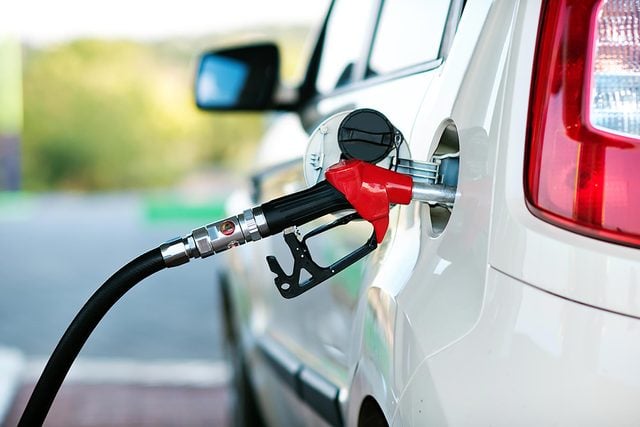
Keep these productivity-boosting items in your car.
Choose trustworthy gas stations
Inquire about filter quality and their maintenance policy. If the answers are unsatisfactory, find a different station. Some places lack pump filters, exposing you to dirty gasoline. Others have improper fuel mixing or dilution. It’s crucial to find a station you can rely on and stick to it.
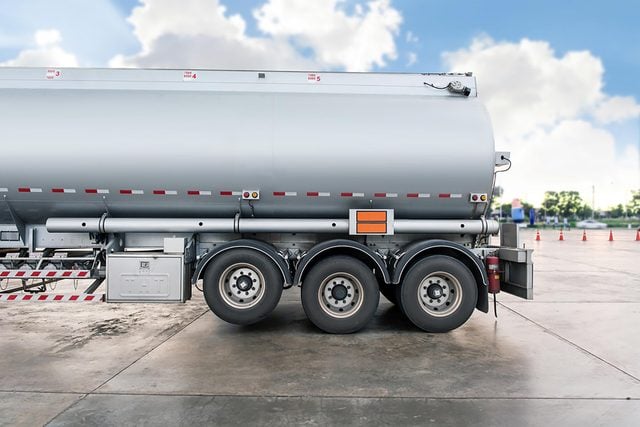
Discover the importance of opening your car door with your right hand. It could make a significant difference.
Watch out for the tanker
If you spot a gasoline tanker refilling the gas station, it’s best to postpone your visit. The process of filling the underground tanks can stir up sediment, which can lead to fuel filter and injector clogs. These issues can result in poor performance and potential repair needs.
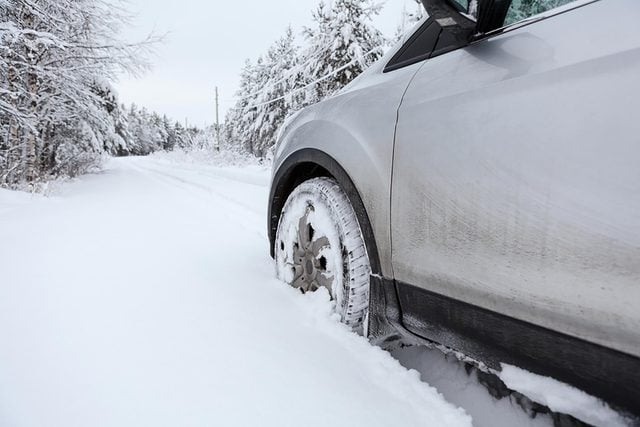
Handle being stuck with care
When you find yourself stuck in mud or snow, avoid worsening the situation by damaging expensive car components. Gentle rocking to free the car is permissible, but if it seems like you’re truly stuck, don’t persist. Continuously switching between forward and reverse or spinning the tires at high speeds can generate excessive heat and cause problems for transmissions, clutches, and differentials. It might be more cost-effective to call a tow truck rather than risking substantial repair bills in the future. Keeping a traction aid, such as sand, gravel, or cat litter, in the trunk is a wise precaution.
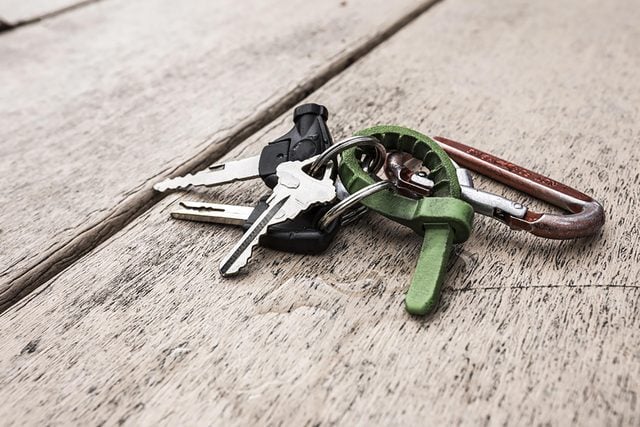
Beware, your car won’t survive winter without these fixes.
Lighten up your keychain
Is your car key burdened by a cluster of other keys? That’s a lot of weight for your car key to bear while it’s in the ignition. The constant bouncing while you drive can cause damage to the ignition’s tumblers, eventually leading to ignition switch failure. To prevent this, invest in a lightweight keychain that allows you to separate your ignition key from the others. By driving with only the ignition key in the ignition, you can add years of life to your switch. If you notice any sticking when you turn on your car, it’s a clear warning that your ignition switch is on the verge of failure. Replace it promptly to avoid getting stranded.

Choose a good car insurer
Sometimes, no matter how cautious you are, disaster strikes in the form of an accident. Ensure that your car receives top-quality repairs by selecting an insurer that covers parts from the original manufacturer and provides a guarantee for authorized repairs. Additionally, familiarize yourself with valuable car-buying tips that your car dealer won’t share.
Keep an auto log
Keep a pad and pencil within your glove compartment to log your gas fill-ups and mileage. If you notice a decline in your gas mileage, make sure to mention it to your serviceman. It could be an early indicator that something is amiss with your car. And if you ever find yourself locked out of your vehicle, use this clever trick to unlock it in just 30 seconds without needing your keys.
Protect Your Car During Extended Storage
When you won’t be using your car for a while, it’s important to take steps to preserve it and prevent any damage or repairs when you return. Here’s what you need to do:
- Make sure to fill up the gas tank completely to minimize condensation build-up.
- Give your car a thorough wash and apply wax to shield the finish.
- Place a vapor barrier on your garage floor to prevent moisture from seeping in.
- Disengage the parking brake to avoid corrosion.
- Use jack stands to relieve the weight on the wheels and tires.
- Remove and disconnect the battery, keeping it on a trickletype charger or periodically draining and recharging it.
- Block the tailpipe with a rag to prevent moisture from entering.
Park in the Shade
Although a garage is the best spot for your car, if that’s not an option, try to park in the shade to minimize damage from sunlight and heat. If shade is scarce or you don’t want to deal with bird droppings, car shades are a great solution. They can be unfolded and placed on the front and rear windshields or attached to various parts of the car with adhesive, Velcro, or suction cups. Not only will this protect your car, but it’ll also keep it cooler on hot days.
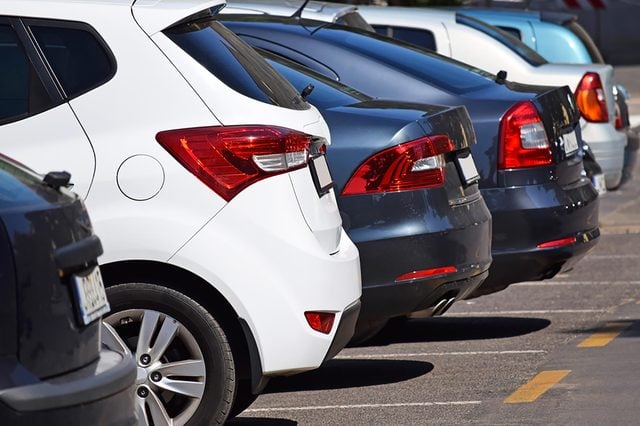
Revitalize the Interior
When it comes to maintaining your car’s cleanliness, don’t overlook the interior. It’s just as important as the exterior. Take a moment to vacuum and sponge the interior every time you wash your car. This will prevent dirt particles from causing unnecessary wear and tear. Additionally, be cautious of spilled liquids like soda as they can be corrosive. To effectively vacuum your interior, make sure you’re using a powerful vacuum with the appropriate wand heads. Avoid using the bare metal wand as it can potentially scratch and damage surfaces. As for vinyl surfaces, gently clean them with a solution of mild detergent and water, ensuring to preserve their appearance and condition.

Show Care to Your Dashboard Gauges
Tending to the cleanliness of your car’s dashboard requires delicate handling. Use a soft damp cloth to lightly wipe away any dust on the clear plastic lenses. Applying too much pressure could result in unwanted scratches. Keep in mind that an accumulation of scratches can hinder your ability to read the gauges, especially in certain lighting conditions. Therefore, exercise caution and maintain the pristine condition of your dashboard gauges.
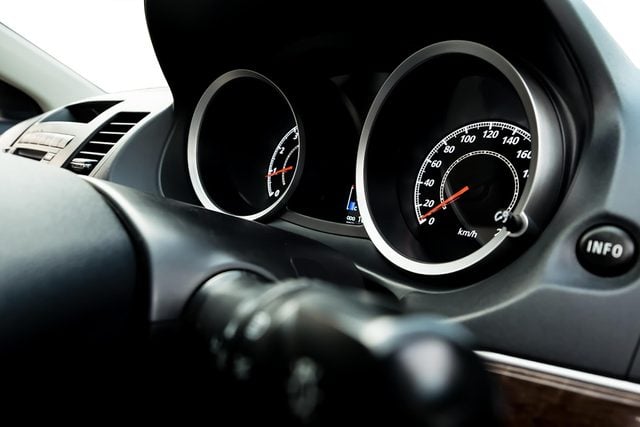
Shield Your Floor Mats from Winter
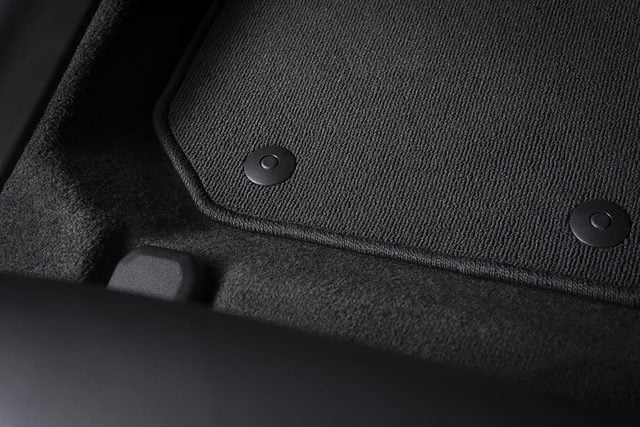
Winter can take a toll on your car’s floor mats, but with the right care, you can protect them from the harsh elements. Invest time in regularly cleaning and maintaining your floor mats throughout the winter season. This will prevent dirt, salt, and moisture from causing permanent damage. By giving them the attention they deserve, you can ensure your floor mats remain in great shape, even during winter’s most challenging days.
Use floor mats to protect the carpeting in your car. The best mats for the winter season are rubber waffle-style ones. They stay in place, stop water from seeping through, and are easy to clean. Carpet-style mats are also useful. Just shake, vacuum, or wash them as needed and replace them when they wear out.
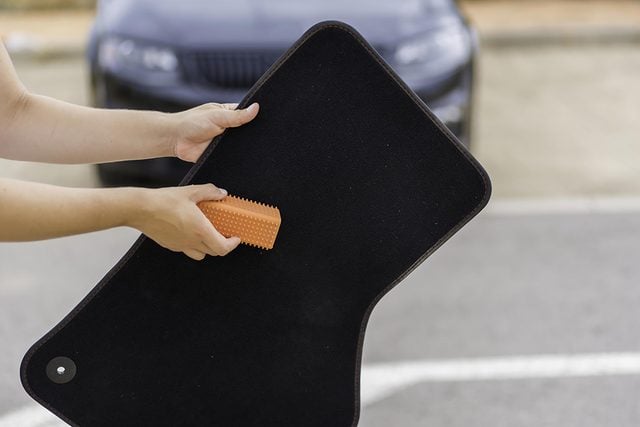
When it’s time to wash your car, don’t forget about the mats. Take out the rubber or carpet mats and give them a good blast with the hose. This will remove any dirt particles that can damage the mats over time. Let them dry in the sun before putting them back in your car.
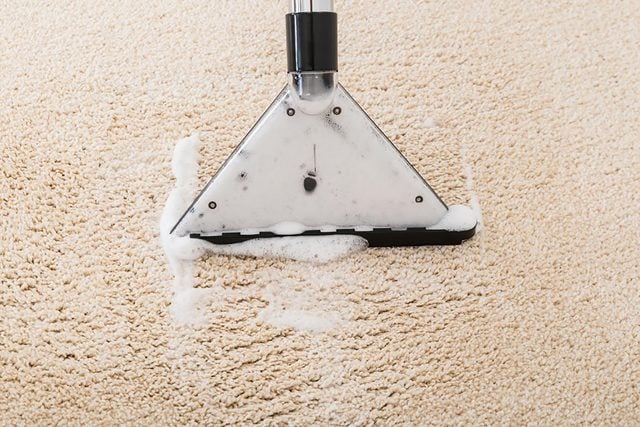
For stubborn stains on your mats or carpet, vacuum them first. Then, use a foam rug cleaner following the instructions provided. Apply the foam to a small area at a time and use a wet sponge or brush to work it in. Once dry, give it another round of vacuuming.
Remember, taking care of your car’s mats and carpeting will keep them looking great and protect them from wear and tear.
Maintain the Integrity of Your Door and Window Seals
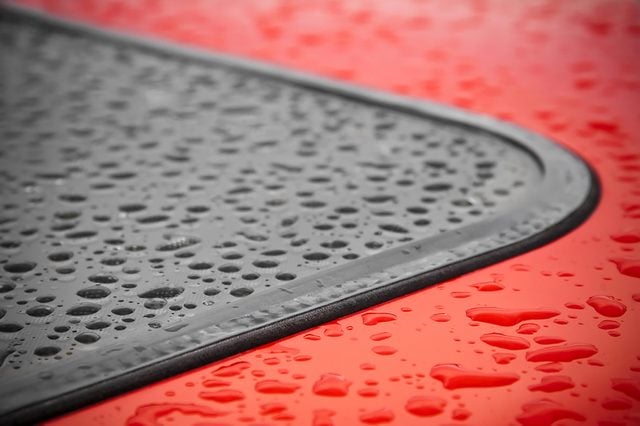
To preserve the quality of your door and window weatherstripping, apply a rubber protectant like Armor-All or silicone. Avoid using oil-based products such as WD-40, as they can harm the rubber material. Regularly clean and treat your car’s weatherstripping to prevent the door from sticking to the rubber seal during cold weather, as this can cause damage. By the way, have you ever wondered why there are those black dots on car windows?
Address Damaged Weatherstripping Immediately
If rainwater is leaking into your car’s interior due to faulty weatherstripping, it’s crucial to take action. Assess whether you can fix or replace it. For minor leaks, brush-on seam sealers can do the trick. Use trim adhesive to secure loose sections that are otherwise undamaged. Special caulking available at auto parts stores can repair torn sections. Additionally, you can prolong the life of worn-but-intact sections by inserting foam rods into the hollow part of the weatherstripping. When purchasing replacement gaskets, make sure to buy a product that matches your car’s original weatherstripping, as dealerships and automotive catalogs offer a wide variety of profiles.

Maintain the Suppleness of Leather
Over time, leather car seats may become dirty and worn. To combat this, use a leather cleaner to eliminate stains and grime. Afterwards, apply a leather protectant specially designed for pigmented or top-coated grain leather, which is the type of leather commonly used for car upholstery. These protectants not only shield against stains, but also contain conditioners to keep the leather flexible and smooth.
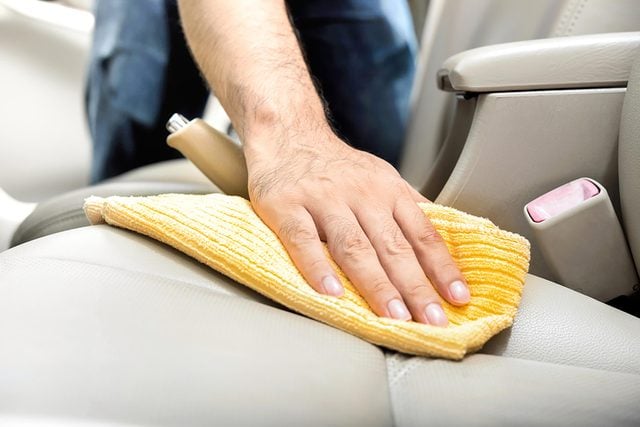
Tackle Stubborn Stains on Upholstery
The same upholstery cleaners you employ at home can also be effective on your car’s upholstery. However, be mindful not to use an excess amount that might saturate the fabric. Utilize a clean cloth to remove any foam residue. If you have velour seats, gently brush the fibers to prevent them from matting and maintain the fabric’s original texture.
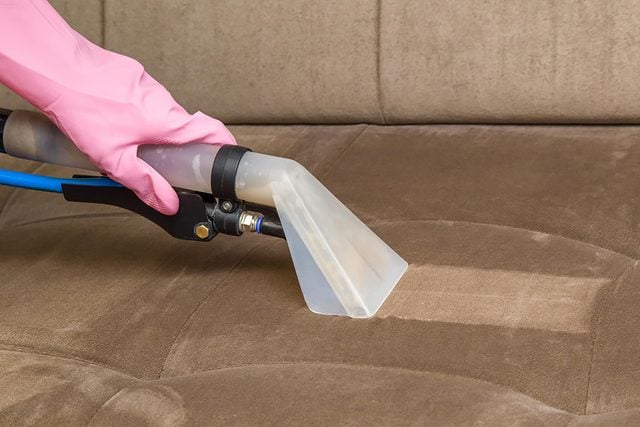
Revive Fabric Upholstery
Revitalize your fabric car seats and carpets by applying a fabric protectant like Scotchgard. This will enhance their resistance to dirt and stains, making future cleaning a breeze. Remember to thoroughly clean the fabrics before applying the protectant, and test it on an inconspicuous area to ensure it doesn’t cause any discoloration.
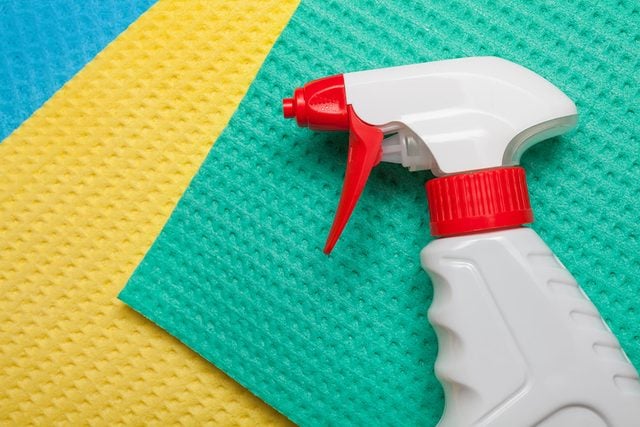
Protect Your Car Seats from Stains
Food particles and spills can easily accumulate under your baby’s seat, causing permanent stains on the upholstery. To prevent damage, place a heavy plastic sheet and an absorbent towel underneath the seat. Make sure to re-secure the seat according to the manufacturer’s instructions. These car seat tips are crucial for every parent to ensure their child’s safety.
Preserve Your Car’s Paint from the Sun
The paint on your car not only enhances its appearance but also acts as a shield against rust. If possible, park your vehicle in a garage to protect the paint. If that’s not an option, try parking in the shade or using a car cover. The sun’s harmful ultraviolet rays can cause the paint to fade over time. Some car covers even provide cushioning to safeguard against light impacts. Discover how your car’s paint color impacts your crash risk by clicking here.

Fix Nicks on Your Car Promptly
Don’t wait for nicks on your car’s exterior to turn into rust spots. Keep a matching touch-up paint handy to quickly fix any minor nicks, especially around door edges. By addressing them sooner rather than later, you can prevent the formation of rust and keep your car looking flawless.
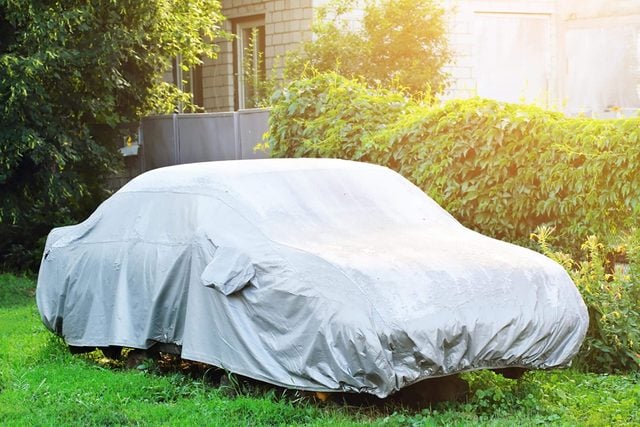
Revive your Light Covers with Tape
Don’t let a cracked taillight or turn-signal cover ruin your ride. Ignoring it could lead to water damage in the light compartment. Instead, grab some bright red or orange tape designed specifically for this purpose. You can easily find it at automotive parts stores.
Maintain Your Light Fixtures
Next time you need to change a faulty bulb, take the opportunity to give your sockets some TLC. Use fine steel wool or a small wire brush to clean up any dirt or corrosion. Make sure to wipe away any debris before inserting the shiny new bulb.
Say Goodbye to Windshield Chips
Is there an unsightly rock chip, crack, or ding on your windshield? Save yourself the hassle and bring your car to a reliable windshield repair shop. They’ll have the expertise to fix it up in no time.
Bringing your damaged windshield back to its former glory is now possible without breaking the bank. Instead of shelling out money for a complete replacement, opt for an affordable fix to those bothersome chips and cracks, regardless of their length. These repairs not only prevent further damage and reinforce the structure, but they also enhance the clarity of your windshield.
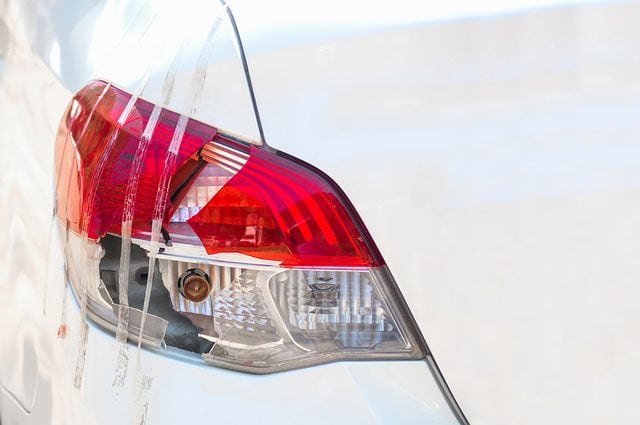
Keep Your Windshield Clean and Functioning
When filling your windshield washer reservoir, always use washer fluid instead of water. Using water may not effectively clean your windshield and could potentially freeze in colder temperatures, causing damage to your system. Additionally, avoid operating your washer system when the fluid is empty to prevent any harm to the washer fluid pump.

Repairing a Cracked Washer Fluid Tank
It’s quite common for the washer-deicer fluid tanks to develop cracks over time. If you’re unable to replace the tank immediately, a quick fix is to place a plastic freezer bag inside the tank and fill it with washer fluid. This temporary solution will keep your system functioning until you can acquire a new tank or find one at a scrapyard.
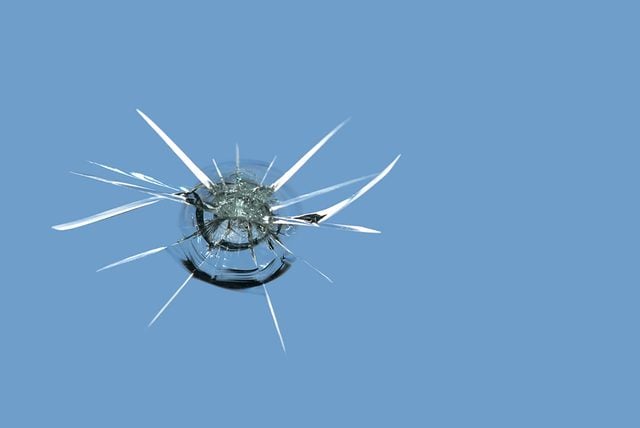
Don’t Overload Your Vehicle
Never exceed your car’s roof load specifications or weight limits. Check your vehicle owner’s manual for this information. Also, be mindful of the weight limit of your roof rack, which typically ranges from 150 to 200 pounds (68 to 90 kg). To give you an idea, this is equivalent to eighteen 8-foot 2 x 4s (2.4-meter 38 x 89s) or three sheets of 3/4-inch (17-mm) plywood. If you have a heavy load to transport from the home or garden center, consider opting for delivery instead. This will not only save wear and tear on your car but also on yourself.
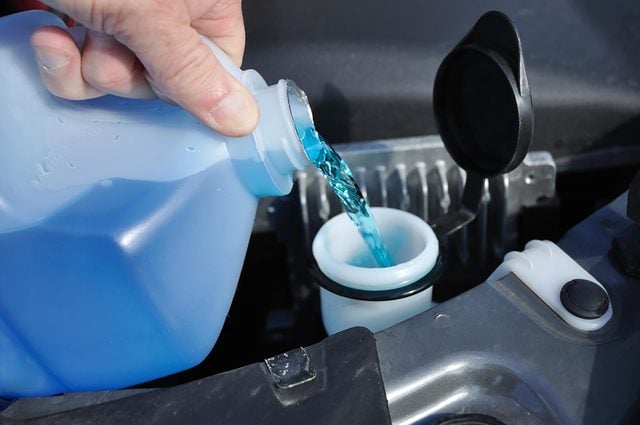
Keep an old blanket handy
To protect your car’s roof from scratches, lay down an old blanket before securing items such as lumber, bicycles, or luggage to your roof rack.
Secure loads to avoid dents and scratches
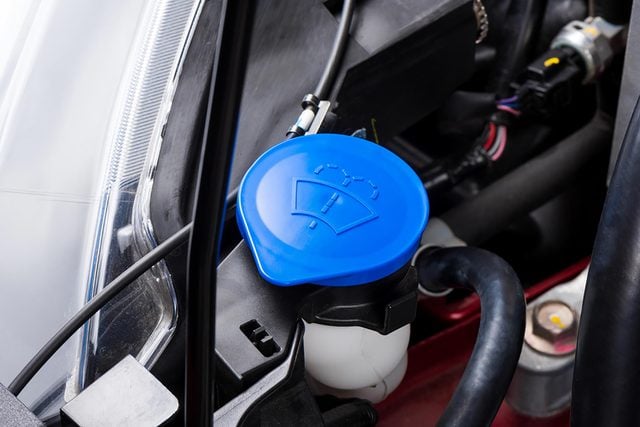
Improperly stowed loads can ruin the finish of your car or truck, as well as cause damage to wagon and hatchback interiors. Invest in racks specifically designed for bicycles, cargo, and luggage. For tall objects in a pick-up truck bed, use one or two shower curtain rods as braces. Push the cargo against the front wall of the truck bed and install the rods behind it, twisting to secure. Additionally, cargo nets can help prevent objects from shifting and causing damage in a truck bed.
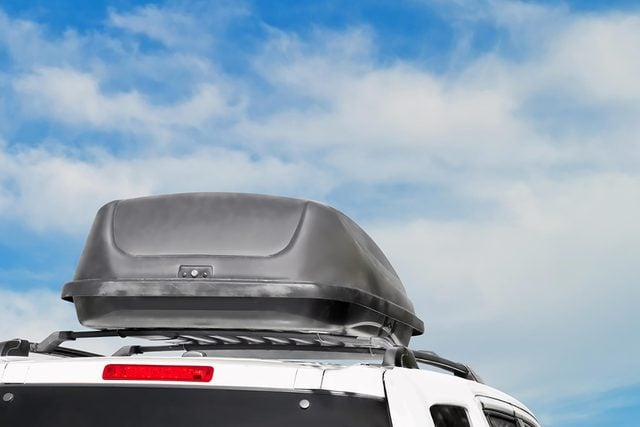
Check your wheel-well splash guards
The humble splash guards may not seem like much, but they play a vital role in protecting your car’s engine compartment. By preventing water and salty slush from splashing up, they shield sensitive electrical components from damage. However, these guards are prone to tearing off without your knowledge. Take a moment to inspect them while washing your car. If you spot any damage, secure them with the appropriate fasteners or replace them altogether. For an extra layer of defense against muck and debris, consider installing mud flaps, also known as splash guards.

Don’t neglect washing in winter
It’s easy to understand why many people avoid washing their cars in messy winter weather. After all, it can feel pointless when the car is bound to get dirty again quickly. However, washing your car is even more essential during this season. The combination of sand, slush, ice, and road salt is a recipe for rust, which can wreak havoc on your vehicle. The corrosion process accelerates when the temperature repeatedly goes above and below freezing. That’s why, particularly during these messy months, it’s crucial to rinse the undercarriage and hard-to-reach areas prone to rust, such as the bumpers and wheel wells. If the temperature outside allows for drying, grab a warm water bucket and wash your car at home. Otherwise, head to a local car wash that will ensure the car is thoroughly dried.
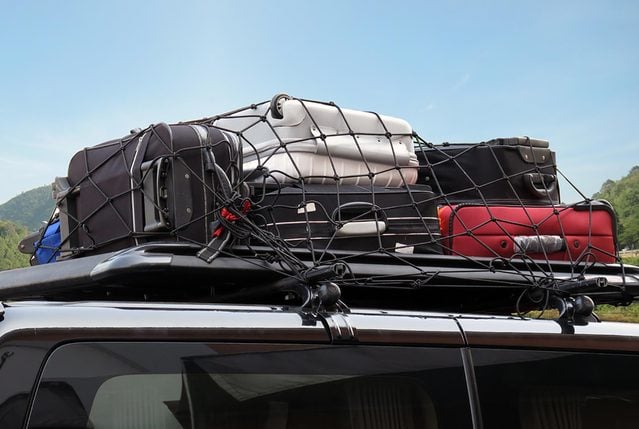
Preserve and Enhance Your Car’s Paint with Wax

Revitalize your car and maintain its pristine appearance by giving it the care it deserves. Waxing your car goes beyond aesthetics, as it serves as a protective shield against oxidation, bird droppings, sap, and pollution. Unleash the thrill of driving a gleaming vehicle while safeguarding its paint job.
Follow these steps to achieve maximum protection:
- While liquid and spray waxes may appear tempting due to their ease of use and instant shine, nothing surpasses the durability and long-lasting effect of paste wax. Look for a paste wax with a high carnauba wax content for superior results.
- Using a damp sponge, apply a thin and uniform layer of wax onto every surface of your car. Be careful not to overapply, as it will become challenging to remove and may leave residue behind, spoiling your finish.
- To prevent fine scratches, opt for a clean, soft cotton or microfiber cloth when removing the dried wax.
- Prioritize the nose and hood areas by applying an extra coat of wax. These areas are prone to quicker wear and tear.
Give Your Car an Impermeable Shield
Experience the latest innovation in car protection with self-adhering urethane films. Protect vulnerable painted areas, such as the front bumper and doors, from minor abrasions and stone chips. These films can withstand regular washing and waxing, ensuring that your car stays impeccable. While professional installation is recommended, you can remove these films yourself when needed.

Preserve Your Car’s Flawless Finish
Keep your car in top shape by investing in a fender cover. This handy tool will protect your fender from scratches while providing a convenient spot to rest your tools. No need to worry about your belt buckle damaging your paint when you lean into the engine compartment to work.
Keep the caps on
Imagine stepping out into your driveway, ready to start your day, only to find a flat tire. How did it happen overnight? Well, one possible culprit is a leaky valve due to a missing tire valve cap. These little caps are essential for keeping out dirt and moisture that can cause leaks. Remember to always keep caps on all your tire valves. And when you replace your tires, make sure to request new valves from the tire shop.
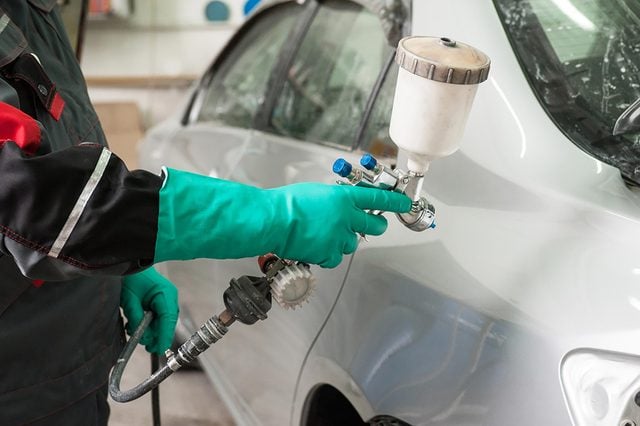
Maintain proper inflation
Under-inflated tires can lead to tire failure and shorten their lifespan. To maximize the mileage you get from your tires, it’s crucial to maintain proper inflation. Invest in a tire pressure gauge and make a habit of using it at least once a month (more frequently in hot weather). Consult your vehicle’s owner’s manual for the recommended tire pressure, and always check the tires when they are cold for accurate readings.
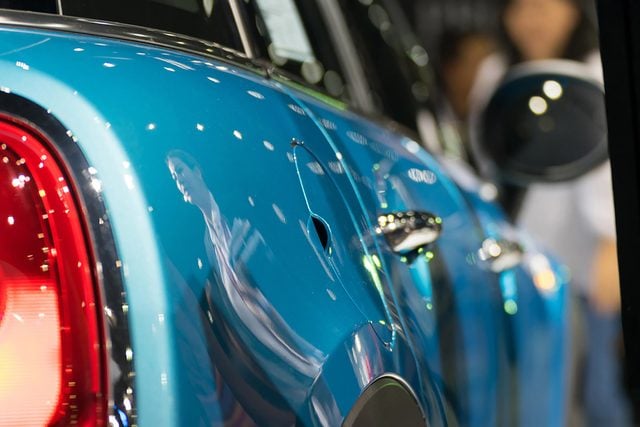
Watch out for the damp thumb
When you visit a service station to top off your tires, pay attention to the air pump. Press the pin inside the inflator valve with your thumbnail. If your thumb becomes wet, inform the station manager that the tanks need draining and find another station. Moisture trapped inside a tire can cause pressure changes and damage the rims.
Inspect for uneven tire wear
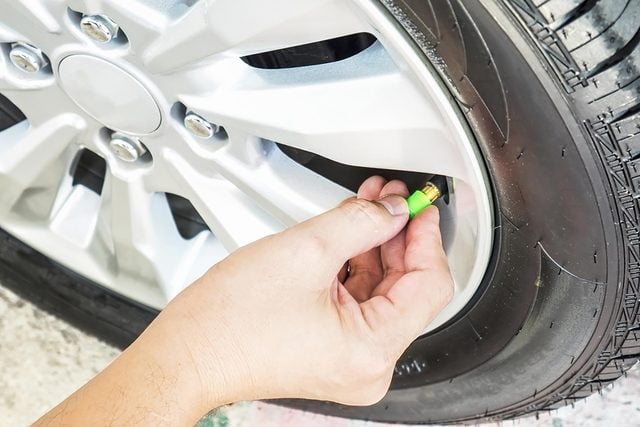
Take a look at your tires for any signs of uneven wear. If you have consistently maintained proper tire inflation, uneven wear might indicate the need for a wheel realignment. It could also signal issues with brakes or shocks, a bent wheel, damage inside the tire, or worn bushings.
Ensure tread safety
In many states, it is required to replace tires when the remaining depth reaches 1/16-inch (1.5 mm). To make it easier to determine when tire replacement is necessary, tires in North America come with “wear bars” molded into them. However, if you anticipate driving in rainy conditions, it is advisable to change your tires when the tread depth reaches 1/8-inch (3 mm). This prevents water from getting trapped under your tires, reducing the risk of hydroplaning—a dangerous situation where your car loses traction and skims on the water’s surface. Test the tread depth by inserting an American quarter into various places. If Washington’s head remains covered, you have sufficient tread for driving in the rain. For snowy conditions, aim for at least 3/16-inch (5 mm) of tread depth to ensure proper traction. Use an American penny to measure the tread depth in this case.
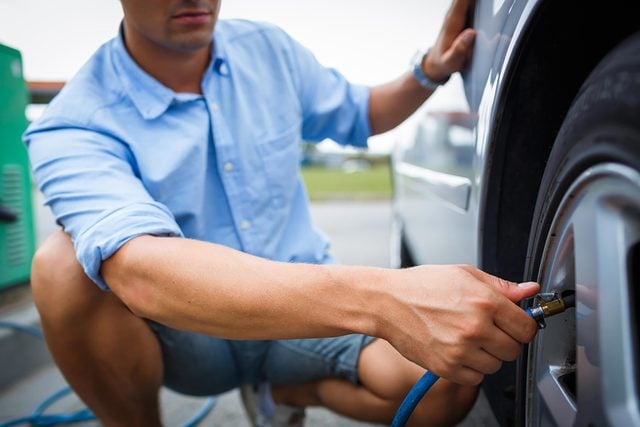
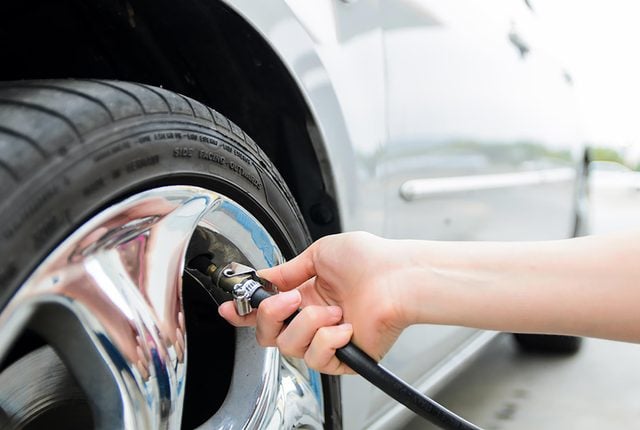
If the pinnacle of the Lincoln Memorial is perpetually cloaked, then you are well-prepared for the season of winter driving.
Revolve your tires
Revolve your tires to ensure a balanced wear and maximize their lifespan on the road. Give extra attention to the first rotation, as it sets the foundation. Refer to your owner’s manual for the recommended rotation period and pattern. In case it’s not specified, aim for a tire rotation every 6,000 to 7,500 miles (9,700 to 12,000 km). Your tire dealer can guide you on the correct rotation pattern.
Temperature’s impact on tire pressure
Tire pressure is affected by outside temperature fluctuations. A mere 10 degrees F (6 degrees C) drop can decrease air pressure by 1 or 2 pounds. In hot weather, the loss can be even more significant. Low tire pressure leads to rapid wear and compromises your driving experience. If you reside in an area with frequent temperature changes, make it a habit to regularly check your tire pressure and add air as required.
Save Money on Tires
If your car has just a year left, don’t waste money on new tires. Instead, consider buying used ones. Call tire dealers in your area and ask about their available options. You’ll be amazed at how much wear is still left in tires that were turned in by car owners who prioritize appearance. Just make sure you have your tire size ready.
Keep Your Wheels Clean
Your car’s wheels endure a lot of dirt and dust from the road, especially the brake pad residue. Regular car-washing liquid won’t cut it when it comes to removing these stubborn stains. Invest in a wheel cleaner specifically designed to tackle such grime. Be careful to choose the right formula for your wheels—there are cleaners for metal, painted, and clear-coated wheels. For extra protection, use wheel polish on metal wheels and wax on painted wheels.
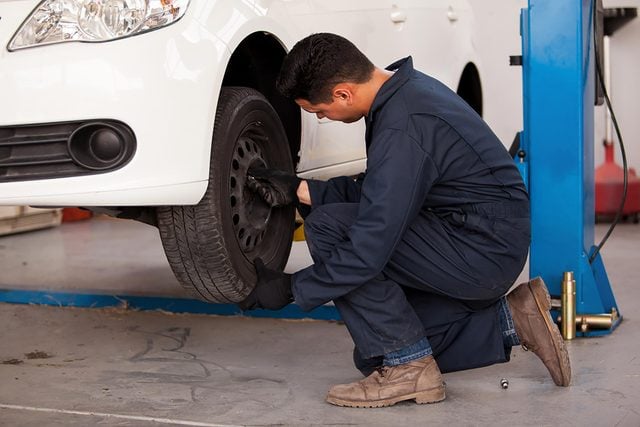
Prevent Lug Nut Issues
Lubricating your lug nuts from time to time can save you from costly problems. When left unlubricated, they can become stuck or frozen on the studs due to corrosion. Repairing this can be a hassle and expensive. Don’t find yourself in a situation where you need to call for a tow truck because you can’t remove a flat tire. During your next tire change or rotation, purchase some anti-seize lubricant from an auto supply store. Before applying the lubricant, clean the stud threads with a wire brush.
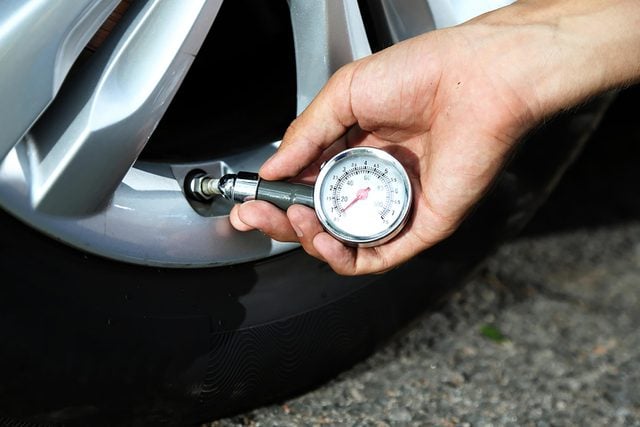
This special formula is designed to keep your lug nuts (and even spark plugs) from getting stuck and to prevent them from coming loose while you’re driving. Unlike other lubricants, it won’t let them seize up. However, if you do encounter a situation where a lug nut becomes frozen onto the stud, you can try spraying both the nut and the stud with either WD-40 or Liquid Wrench. Let it soak in for about 10 or 20 minutes, then apply some heat using a heat gun. Finally, use a ratchet wrench to effortlessly remove the lug nut.
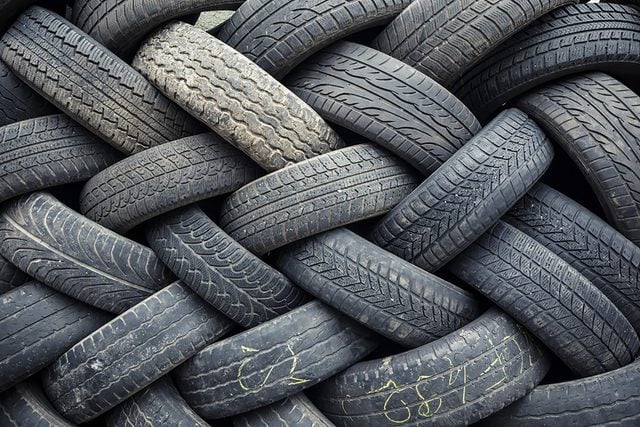
Hang on tight to your hubcaps! The last thing you want is to see them flying off into the distance. Hubcaps, wheel covers, and center caps can easily come loose while driving if they weren’t properly installed, if they have loosened over time, or if they have been damaged from parking mishaps. But fear not, here are some tips to ensure these valuable parts stay securely attached to your car:
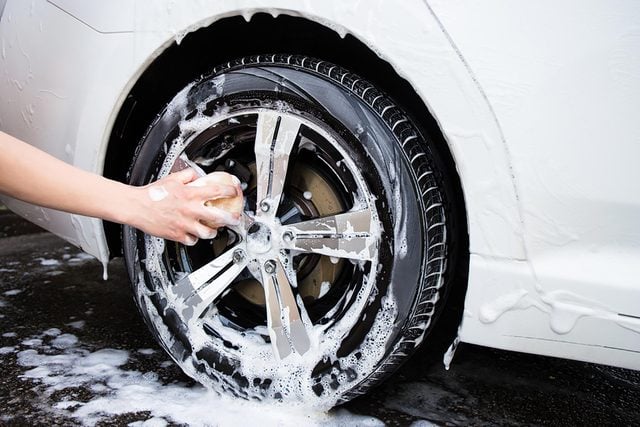
– If your metal hubcap has become loose, try removing it and gently adjusting the metal clips outward. This simple fix should solve the problem.
– For newer plastic hubcaps and certain wheel covers, they are typically held in place by a retaining wire ring that snaps into tabs on the wheel. When installing these types, be careful not to bend or break the tabs.
– To prevent any potential damage to your expensive hubcaps during a repair, it’s a good idea to remove them yourself before taking your car in. This is especially important if the repair involves wheel removal, such as a brake job or new tires. If you decide to reinstall the hubcaps on your own, rest them in place and give them a gentle tap with a rubber mallet. Don’t go overboard with the force, as you wouldn’t want to break the clips underneath. If you prefer to have a professional handle the covers, make sure they are reinstalled properly and look even and flush.
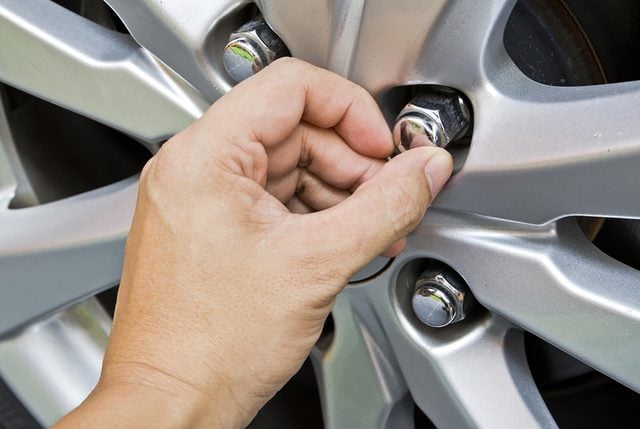
Now, let’s talk about wheel alignment. It’s essential to have your car’s wheel alignment checked regularly, ideally every 30,000 miles (48,000 km) or as recommended in your owner’s manual. It’s also a good idea to have it checked after purchasing new tires or when you replace steering components like a rack-and-pinion steering unit.
Enhance Your Driving Experience with Proper Tire Alignment
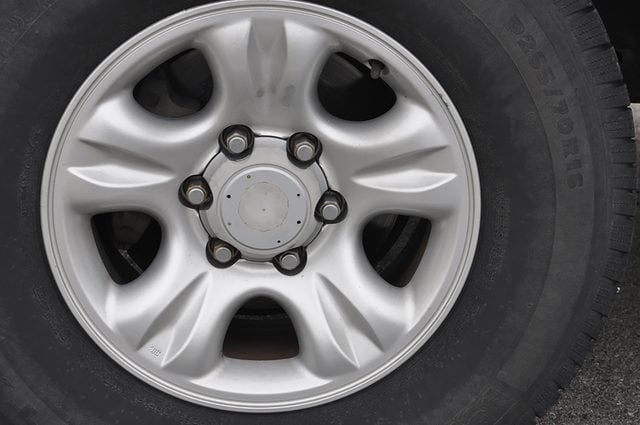
Experience the Difference in Handling and Tire Longevity
Is your steering feeling a bit stiffer than usual? Do you notice your vehicle veering to one side? These could be signs of an alignment issue. Not only can improper tire alignment affect the handling of your vehicle, but it can also significantly reduce the lifespan of your tires. Don’t let alignment problems hinder your driving experience. Take action today to ensure optimal performance and enjoy a smoother ride.
Ensure optimal brake performance
Regularly inspect your brake fluid to maintain its effectiveness. Before opening the master cylinder lid, ensure that it is free from any dirt or debris. If you find that your fluid levels are low, only use the specific type recommended by the manufacturer of your vehicle. Do not attempt to substitute it with other fluids like transmission or power-steering fluid. Additionally, refrain from using brake fluid from a previously opened container, as it readily absorbs moisture and becomes contaminated.
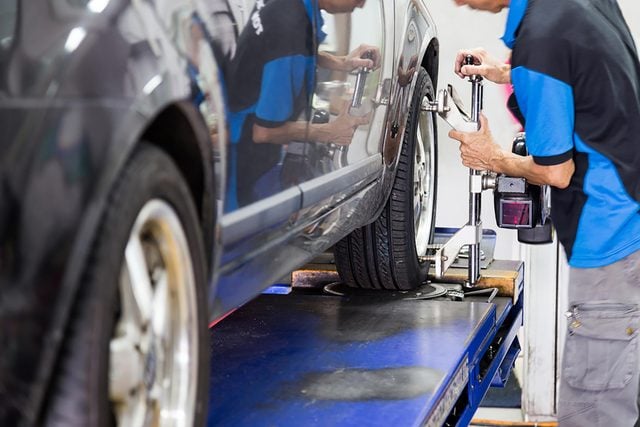
Preserve your anti-lock brake system
Your anti-lock brake system is susceptible to moisture, which can have detrimental effects on costly components like the ABS pump and brake lines. To mitigate this risk, it is crucial to bleed or purge your brake fluid every three years, or as stipulated in your owner’s manual. By conducting this maintenance task, you can prevent internal corrosion and extend the longevity of your ABS system.
Check the engine oil regularly when you fill up your car. Here’s how you can do it:
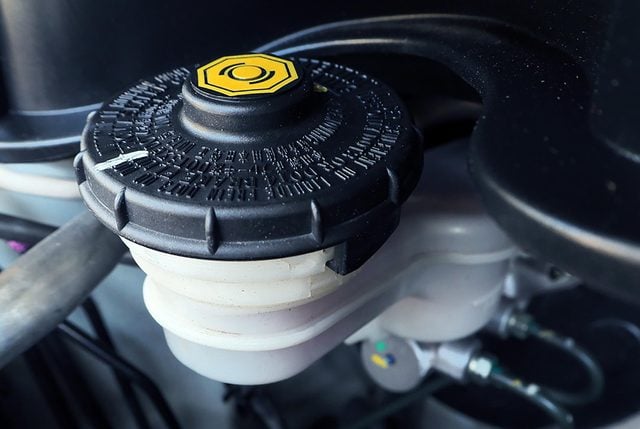
– First, run or drive your car for about 15 minutes to warm up the oil. Then, park it on a level surface. Switch off the engine and wait for 15 minutes to let the oil drain back to the oil pan.
– Take out the dipstick and wipe it clean using a paper towel or rag. Put the dipstick back in all the way and then take it out again to check the oil level. It should be between the hash marks on the dipstick.
– If needed, add the specific type and amount of oil mentioned in your owner’s manual.
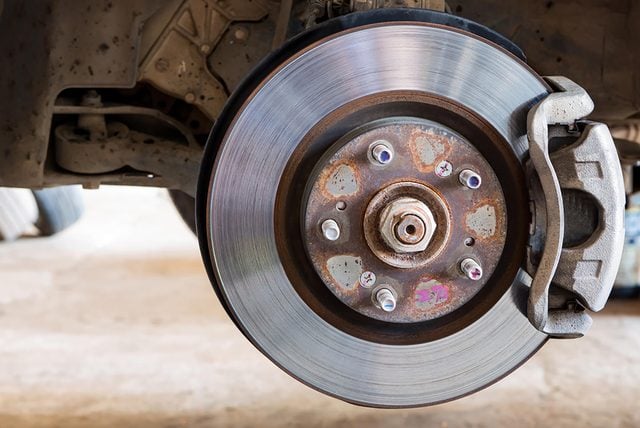
It’s crucial to change your oil frequently, just like your dad knew. While modern car manuals suggest longer intervals between oil changes, regular changes help eliminate dirt and metal particles that can harm your engine. For “severe conditions,” follow the recommended intervals to extend your engine’s life, especially if you often drive in stop-and-go traffic.
One important tip is to avoid overfilling your crankcase with oil. If you do, air bubbles will mix into the oil, making it difficult for the oil pump to circulate properly. So be mindful not to exceed the recommended level.

The Dangers of Overfilling Automotive Fluids
Don’t Let Your Engine Overheat
Overfilling automotive fluids can have serious repercussions, including engine overheating and increased stress on vital components. This can lead to costly repairs and unnecessary headaches. It’s crucial to be mindful of the fluid levels in your vehicle to avoid these issues.
Spark Plug Troubles
Did you know that overfilling can also result in fouled spark plugs? This not only affects the performance of your engine but can also lead to difficulties starting your vehicle. Keeping an eye on fluid levels and refraining from overfilling is the key to avoiding such problems and ensuring smooth operation.
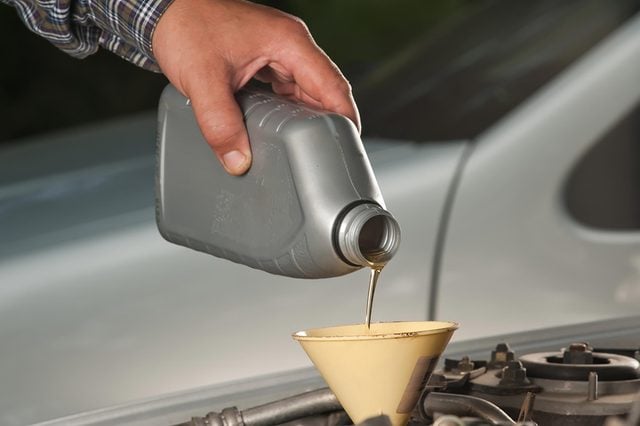
A Bad Idea All Around
Remember, overfilling is never a good idea when it comes to automotive fluids. It’s not just about one specific fluid; it applies to all of them. Maintaining the proper levels is crucial for the well-being of your vehicle and can save you from unnecessary headaches and expenses down the road. Take care of your car by being mindful of fluid levels and avoid overfilling at all costs.
Maintaining Your Car’s Engine: Essential Tips
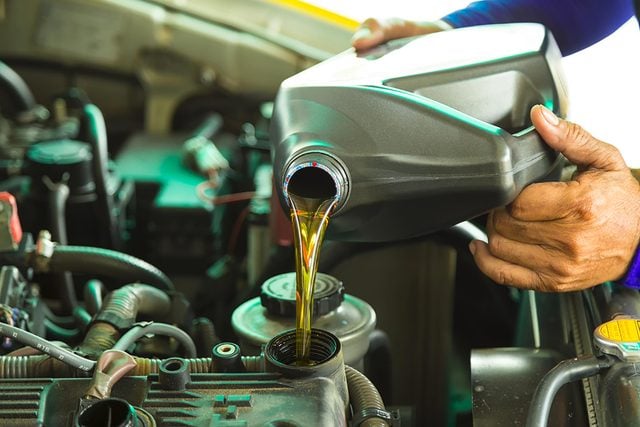
To ensure the longevity and optimal performance of your car’s engine, it is crucial to follow these key steps:
- Clean the oil pan plug: Take the time to wipe the drain plug and washer clean before reinstalling the oil pan. Some plugs come with magnets to catch any metal particles.
- Regularly change the filters: Your car has various filters including oil, fuel, transmission, and air filters. It is important to change them according to your owner’s manual or as per the recommended schedule.
- Oil filter: Ideally, change the oil filter with every oil change; however, changing it at least every other oil change is also sufficient. This is crucial as the old filter retains nearly a quart of dirty oil that can contaminate the new oil. When changing the oil yourself, remember to use an anti-seize lubricant on the filter threads.
- Air filter: Check the air filter every two months and replace it when dirty or during a tune-up. You can locate the air filter under the big metal lid in a carbureted engine or in a rectangular box in a fuel-injected engine. Extend its life by blowing it clean with compressed air.
- Fuel filter: Despite claims that certain newer fuel filters never need changing, it is wise to have it replaced annually. A clogged fuel filter can negatively impact engine performance and indicate potential corrosion in the gas tank.
- Transmission fluid filter: Change the transmission fluid filter after the first 5,000 miles (8,000 km) of driving and every 25,000 miles (40,000 km) or two years thereafter.
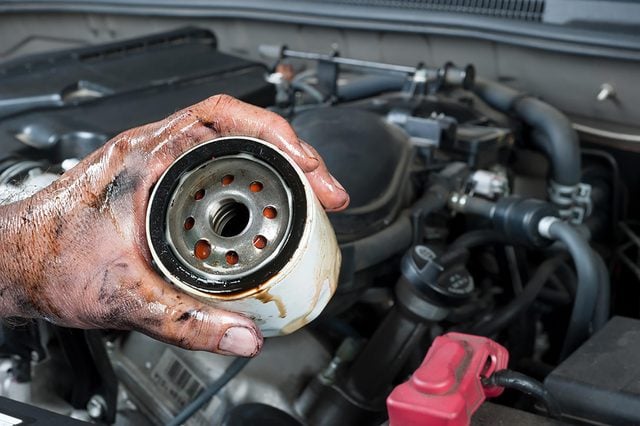
Boost Your Engine’s Performance with Proper Maintenance
The PCV valve is an essential component of older cars, responsible for controlling emissions. Make sure to consult your service manual to determine if your car is equipped with one. This valve plays a crucial role in recirculating partially burned gases from the engine’s crankcase back to the combustion chamber. To keep your engine running smoothly, it is recommended to replace the PCV valve every 30,000 miles (48,000 km) or as indicated in your owner’s manual. Not only will this help optimize your fuel efficiency, but it will also prevent the formation of harmful sludge and corrosion. When replacing the PCV valve, ensure that you select the correct one to avoid any potential engine damage.
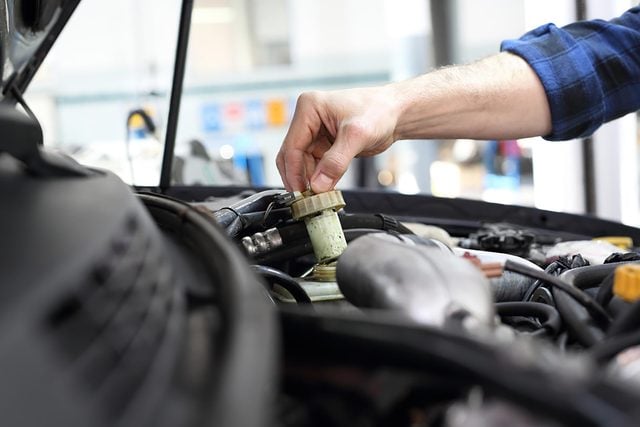
Choosing the Right Oil for Your Vehicle
Contrary to popular belief, heavier is not always better when it comes to oil viscosity. It is crucial to use the oil grade specified in your owner’s manual for the anticipated temperature range of the upcoming season. Lighter oil grades, such as SAE 5W-30, are often recommended for modern, smaller car engines. These lighter grades provide easier starts, enhanced engine protection during winter, and improved fuel efficiency throughout the year due to reduced internal engine friction. Avoid using heavy oil grades in extremely cold weather, as it can potentially harm your engine.

Maintain your transmission:
Ensure to change the automatic transmission fluid and filter once you reach 5,000 miles (8,000 km) and then every 25,000 miles (40,000 km) or two years as specified in your owner’s manual. If you use your vehicle for towing, an annual fluid and filter change is necessary. For manual transmissions, switch the lubricant (motor oil or gear oil) after the initial 5,000 miles and then every 50,000 miles (80,000 km) thereafter. It’s advisable to utilize synthetic motor oil or gear lube for extended transmission longevity, unless otherwise recommended by the manufacturer.

Consider adding oil coolers:
If you anticipate engaging in extensive towing and your vehicle lacks coolers, it’s worth considering their addition. Aftermarket engine oil and transmission fluid coolers are inexpensive enhancements that function similarly to your car’s radiator. These coolers facilitate the flow of fluid while efficiently dissipating heat through numerous small fins. Lower operating temperatures for engine oil and transmission fluid significantly contribute to the overall lifespan of your engine and transmission.
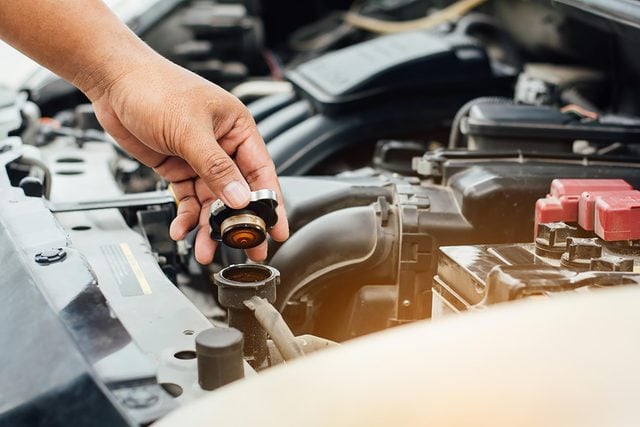
Spark plugs do need changing:
Although regular tune-ups are no longer necessary due to electronic ignition and on-board computers, don’t forget to change your spark plugs. It is generally recommended by most manufacturers to replace the plugs every 30,000 or 40,000 miles (48,000 or 64,000 km) in order to maintain optimal fuel mileage and engine performance. Certain newer models come equipped with long-life plugs, such as double platinum plugs, which can endure up to 100,000 miles (160,000 km).
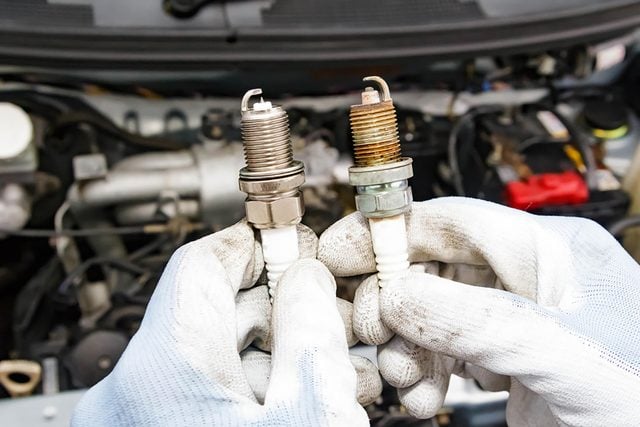
If your car lacks these cool features, don’t worry. You can upgrade after 30,000 miles without breaking the bank. In fact, the cost is minimal, just a few dollars per spark plug. And why stop there? Take the opportunity to replace your spark plug wires too. They usually last around 50,000 miles (80,000 km). Damaged wires can mess up the performance of your fancy new spark plugs, so it’s best to take care of them.
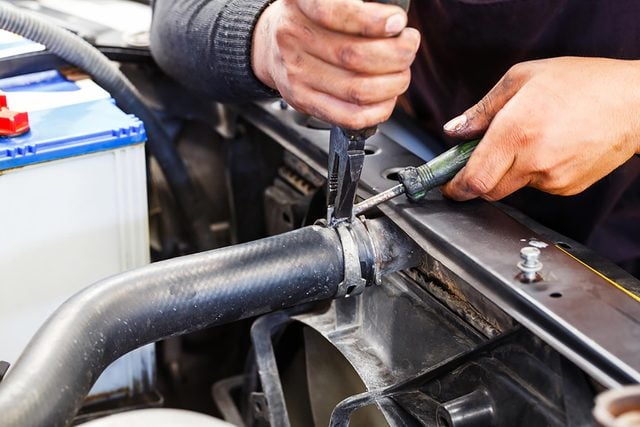
No More Hassles with Hoses
Regularly inspect the hoses under your car’s hood to avoid any untimely hose mishaps while driving. Give them a gentle squeeze when the car is cool and turned off. If they feel hard or make a crunching sound, it’s time to replace them. Similarly, if they are extremely soft or sticky, it’s a sign that they need to be replaced. When the car is warm but turned off, check for bulges or collapsed sections in the hoses. If you find any, it means that the hose walls are weak and it’s best to replace them. Remember, never drive with a ruptured coolant hose as it could lead to engine overheating and damage. It’s also important to pay attention to other hoses that are crucial for your power brakes and cruise control systems.
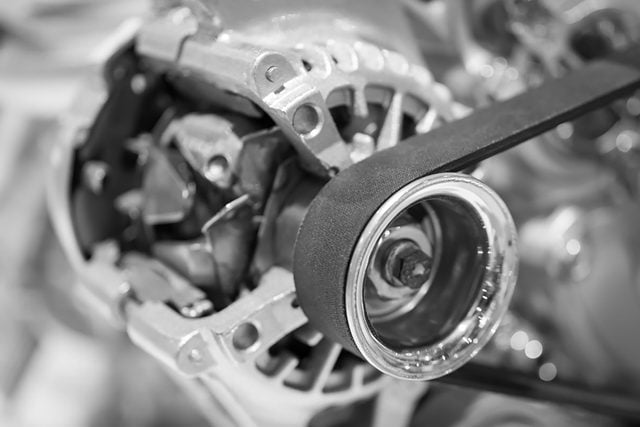
Maintaining Perfect Belt Tension
Take a moment each month to check the tension and condition of your drive belt(s). This is particularly important if your car has multiple belts. Belts that are too tight can cause damage to various components like the AC compressor, water pump, and power steering pump. On the other hand, belts that are too loose will wear out faster and may fail prematurely. Before starting the car, inspect the belt to avoid any injuries from a hot belt or moving engine parts. To check for tension, press the center of the belt’s longest exposed run while holding a ruler next to it. If you can depress the belt between 1/2 to 1 inch (13 to 25 mm), then the tension is just right. If not, refer to your car’s service manual for instructions on adjusting the belt tension or seek assistance from your dealer or an auto repair service. Additionally, keep an eye out for any belt damage, such as glazing (often caused by oil leakage), fraying, or cracks. If you notice any damage, have it checked by a professional and replace the belt if necessary.
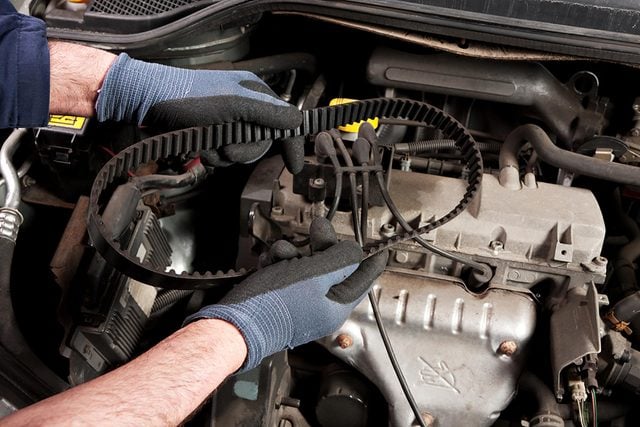
Timing Belt Maintenance

The hidden hero of your car, the timing belt, deserves your attention. If your manual recommends replacing it at 50,000 miles, don’t delay! Neglecting this crucial maintenance task could result in severe engine damage and costly repairs.
Revitalize Your Engine
Give your engine the care it deserves by keeping it clean. Regularly washing your engine not only helps it run cooler but also makes it easier to perform routine checks and detect leaks. Before you begin, protect delicate parts with plastic bags. Use grease-cutting detergents and a bristle brush to scrub away grime. Rinse thoroughly or consider using specialized engine cleaning products for a professional-level clean.

Keep Your AC Running in Winter
Don’t neglect your car’s air-conditioning system during the winter months. Keep it in top shape by running it occasionally. This simple step will prevent any moving parts in the compressor from seizing and ensure that the seals remain soft and flexible.
Maintain Your Car’s Battery
Even if your battery is “maintenance-free” according to the manufacturer, it still requires some attention. Regularly checking on your battery will help prolong its lifespan and save you from the inconvenience of a dead battery.
- Start with a clean battery. A dirty case can cause unnecessary power drainage. Simply wipe it clean with a damp rag, and use a mild detergent if necessary.
- Next, focus on the battery posts or terminals. To clean them, begin by loosening and removing the negative cable first, followed by the positive one. Then, use a brass wire battery brush dipped in a paste made of baking soda and water for optimal cleaning.
- Check the battery case for any damage, such as cracks or bulges. These are clear signs that a battery should be replaced.
- Reinstall the cables, ensuring that you connect the positive one first. To prevent future corrosion, apply a thin coating of grease to the terminals and clamps.
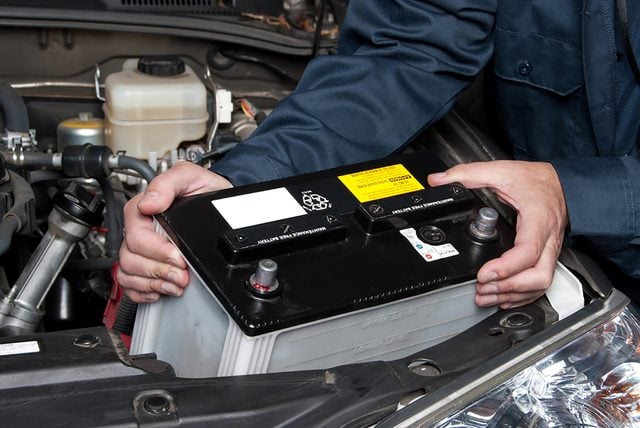
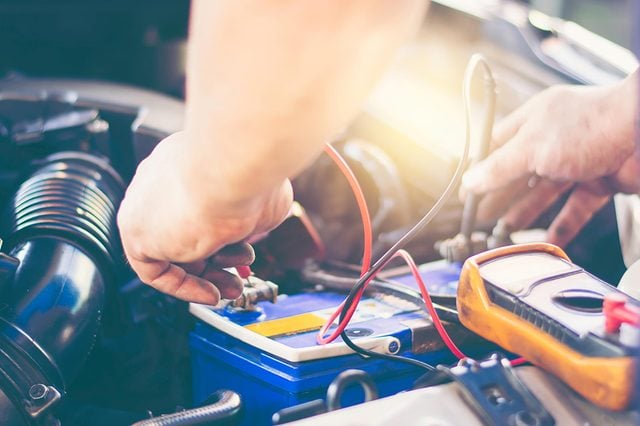
Water Matters for Some Batteries
If your battery has vent caps, it’s important to check the electrolyte level. Ideally, it should be about 1/2 inch (13 mm) above the battery’s top plates. If it falls short, you can add distilled water to bring it up to about 1/4 or 3/8 inch (6 or 10 mm) below the bottom of the vent cap.
Don’t opt for tap water, as it could potentially harm your battery due to the minerals present. Although mechanics are supposed to inspect your battery as part of routine maintenance, they often neglect it. Make a point to request this service.

Show Some Love to Your Battery
Oops! Left your lights on and drained your battery? No worries, follow these steps to jump-start your car without causing any damage to your battery or starter:
- Avoid any explosions! Make sure both cars are off, then connect one end of the positive cable to the positive terminal of the dead battery.
- Connect the other end of the positive cable to the positive terminal of the source battery.
- Attach one end of the negative cable to the negative terminal of the source battery.
- Now, attach the remaining end of the negative cable to an unpainted metal surface on the car engine that is far from the dead battery.
- Wait patiently for a few minutes and try starting the disabled car. No luck? Start the source car and attempt starting the dead car once again.
- Once the car starts, be cautious and disconnect the cables in reverse order.
- If the car still refuses to start, don’t persistently charge it. You might end up damaging the starter. Instead, take the battery to an automotive shop and let them check if it can be recharged.
- Even if you succeed in jump-starting the car, ensure a complete recharge by either connecting the battery to a charger overnight or by driving the car for 5 or 10 miles (8 to 16 km).
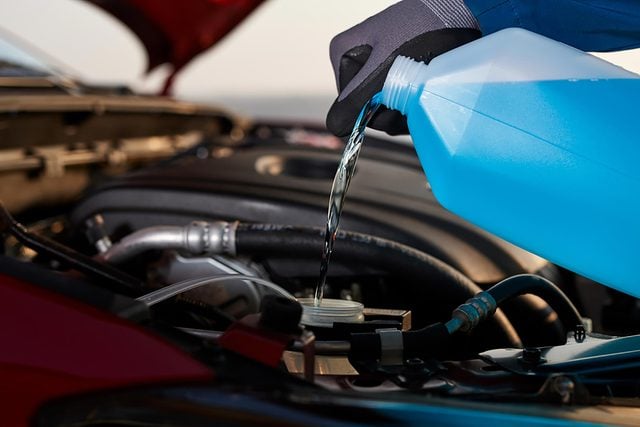
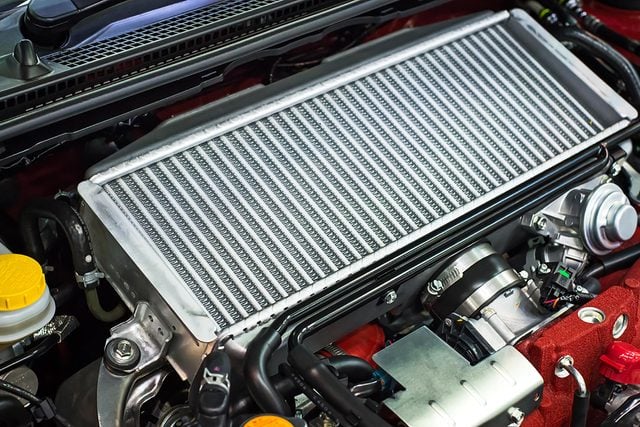
Fix a Leaky Radiator
Why spend a fortune on a new radiator when you can try sealing the leak yourself? Give radiator sealers like Alumaseal from Gold Eagle Co. a shot! Available in powder or liquid form, this fantastic product circulates through your radiator until it finds the pesky hole. Upon contact with the air, Alumaseal sets up and fills the hole perfectly. You can even use this product to stop leaks in your heater core. So, why not give it a try?
Ensure Proper Coolant Mix
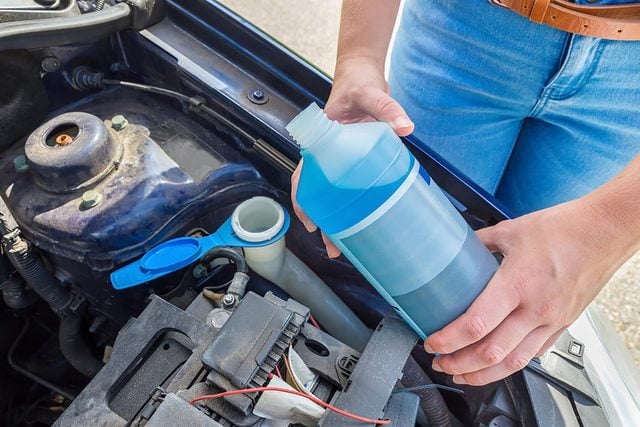
To keep your cooling system running smoothly, it’s crucial to dilute your coolant correctly. Don’t pour undiluted coolant into the system; instead, mix it with water in a 50-50 ratio as recommended. Avoid solely using water or undiluted coolant, as they each serve different purposes. While the coolant protects against corrosion and freezing, the water facilitates efficient heat transfer from the coolant to the radiator.
Monitor Coolant Levels

Make it a habit to check the translucent coolant overflow tank’s level on a weekly basis. If the level is low, fill it up with a 50-50 mixture of coolant and water, filling it to the maximum mark on the tank. Simplifying things, some coolant manufacturers now offer pre-mixed solutions for easy top-ups, providing a quick and convenient option for motorists.
Remember to Flush
Over time, coolant-antifreeze becomes degraded and contaminated. It’s crucial to flush it from your cooling system as instructed in your manual. Neglecting this task can lead to serious damage, such as radiator issues, clogged heater cores, and failure of the thermostat and water pump.
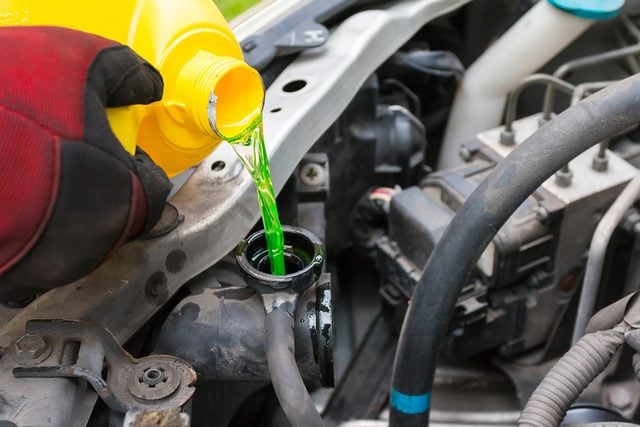
Avoid Mixing Coolants
It’s important not to mix coolants of different colors. If your coolant is pink, refrain from adding a green formulation to it. Otherwise, you’ll end up with a thick solution that won’t effectively do its job. Stick to the coolant recommended in your owner’s manual.
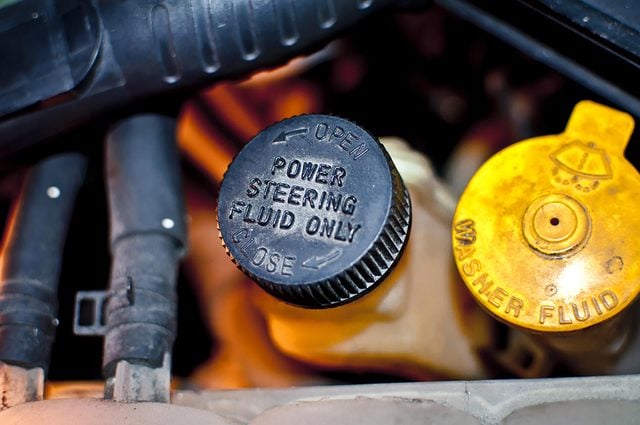
Regularly Check Power-Steering Fluid
Keep an eye on the power-steering fluid levels once a month, ensuring that the car is warmed up. If you notice a low level, it’s essential to have the hoses and pump inspected for leaks. Insufficient power-steering fluid not only makes steering difficult but also causes damage to the power-steering pump. Always use the recommended fluid for your specific car model.
Now, discover the perfect moments to utilize your high beams.

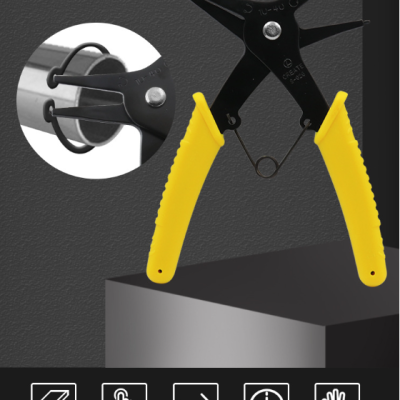 2 In 1 Circlip Plier Snap Ring Pliers Portable Internal External Retaining
2 In 1 Circlip Plier Snap Ring Pliers Portable Internal External Retaining